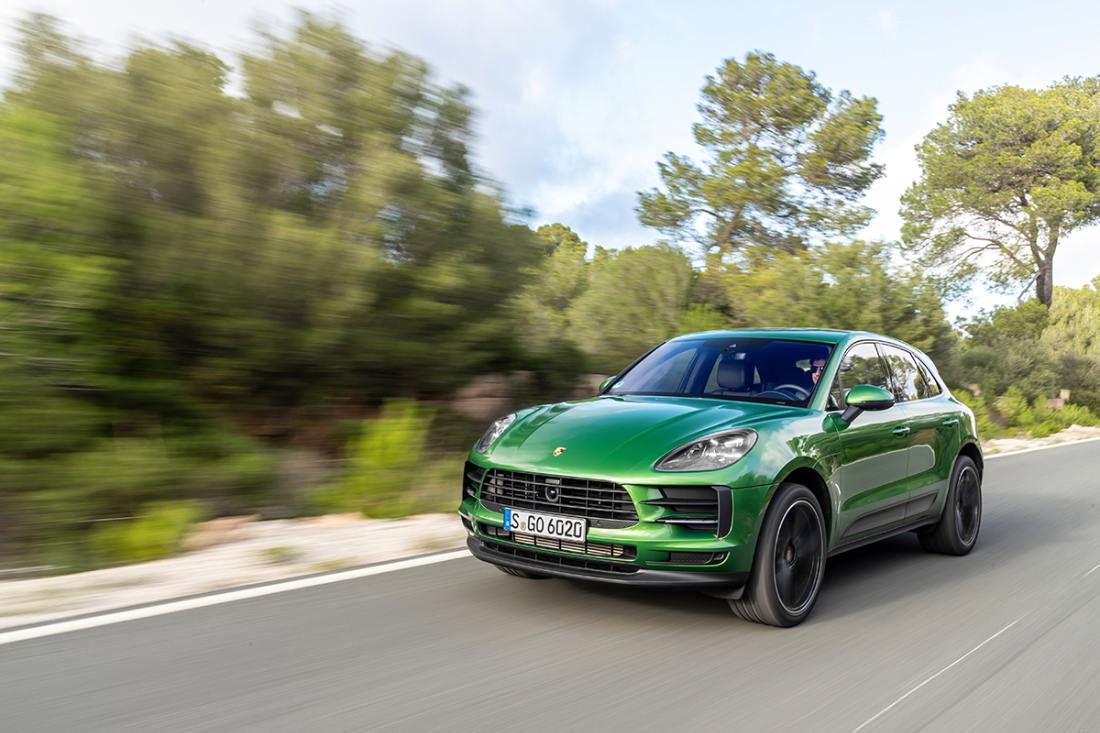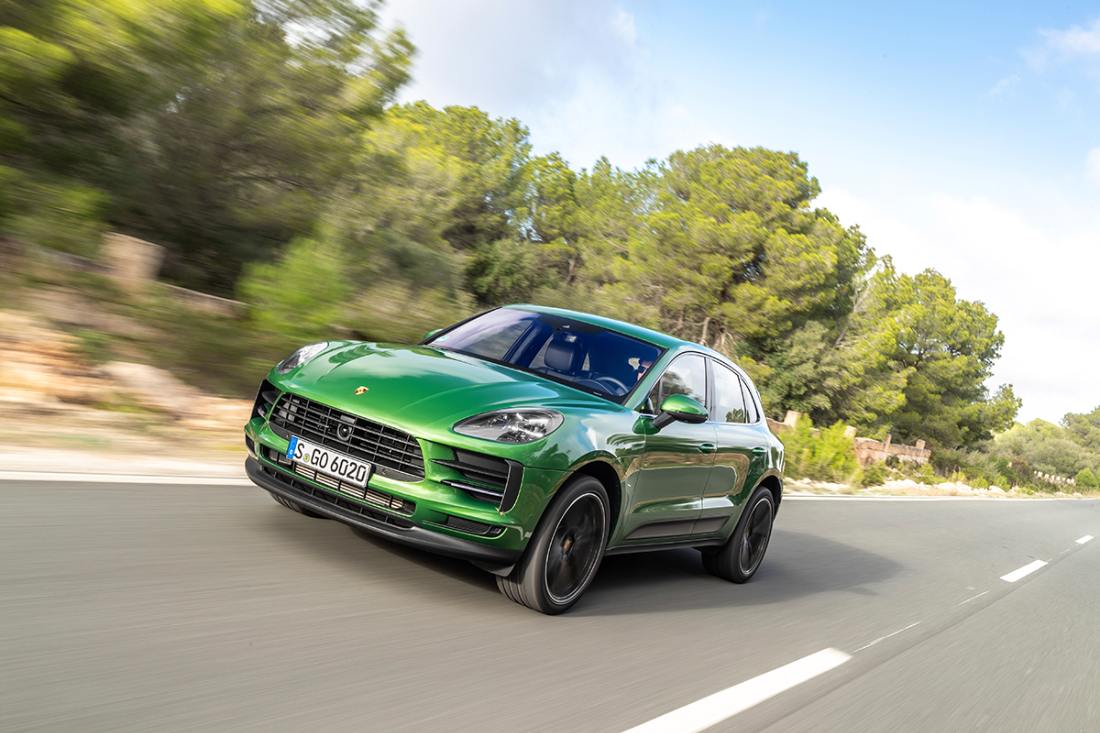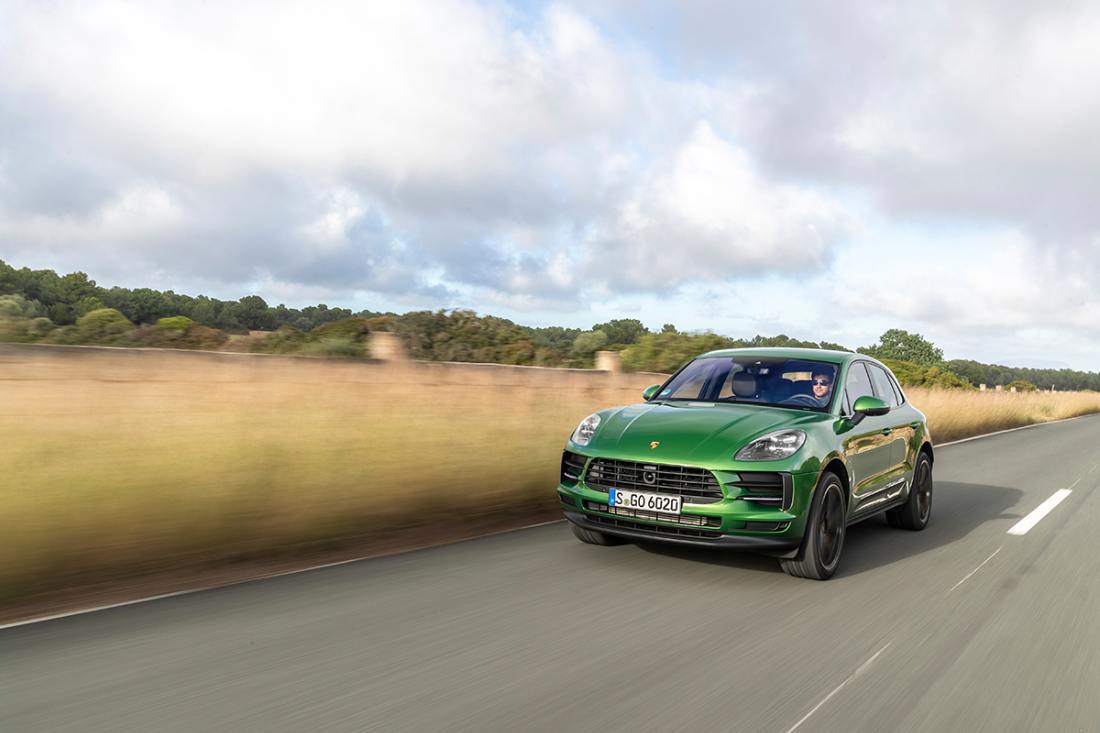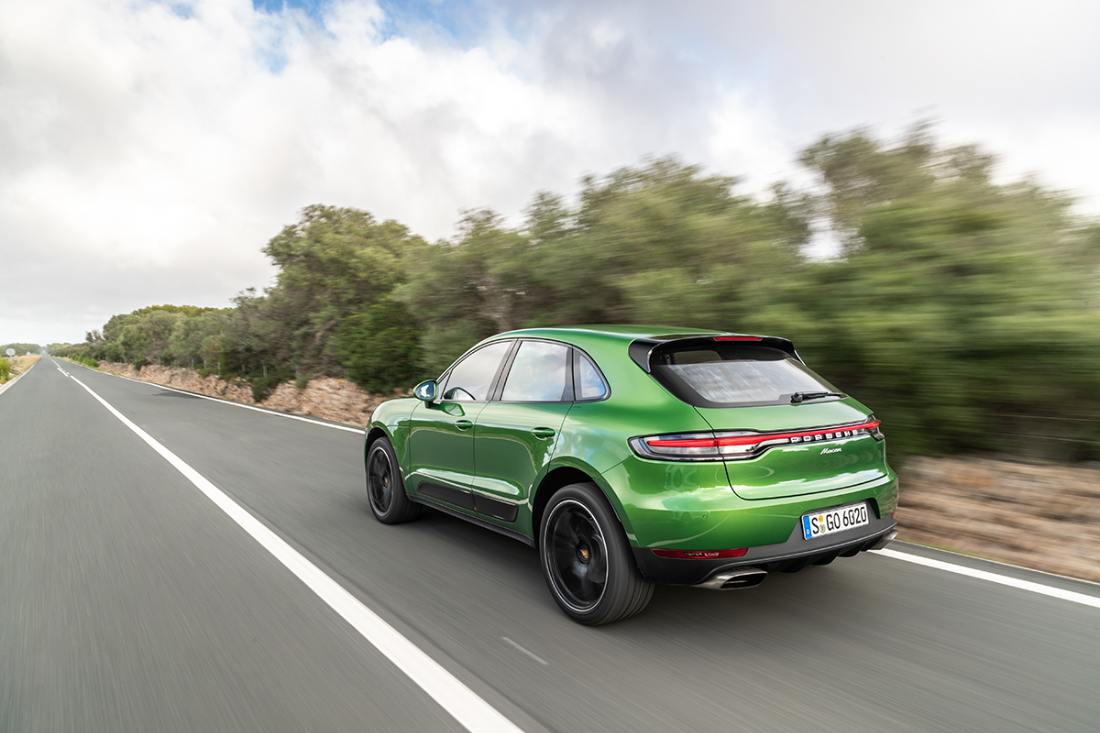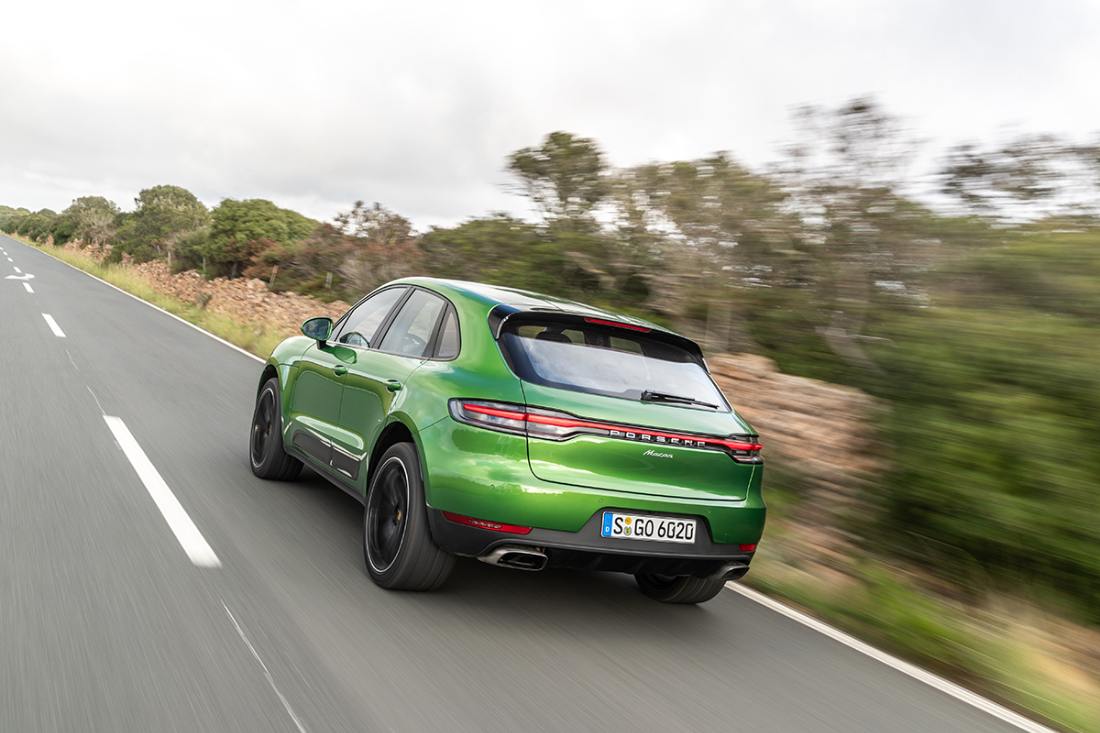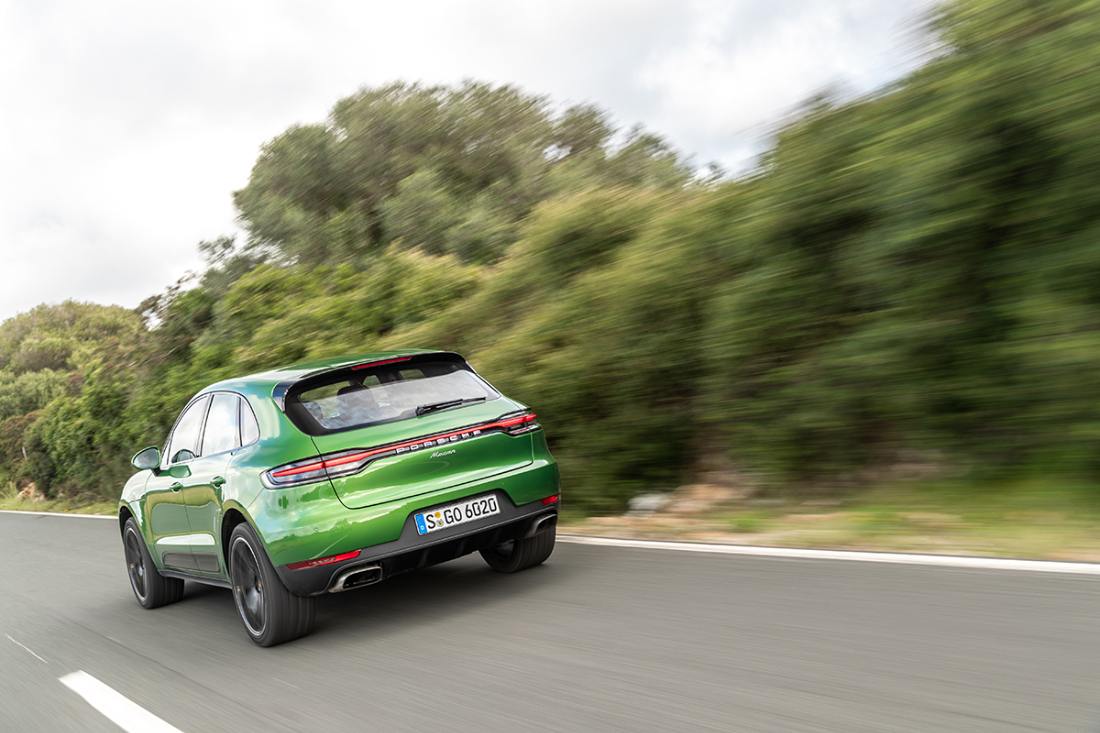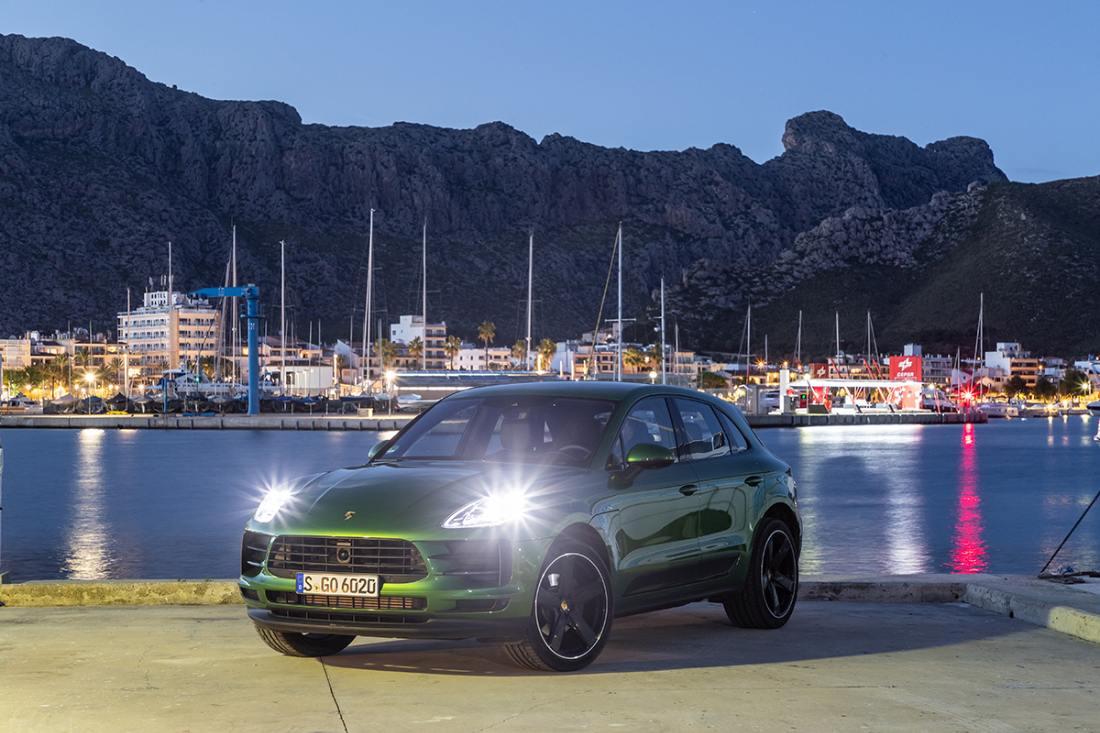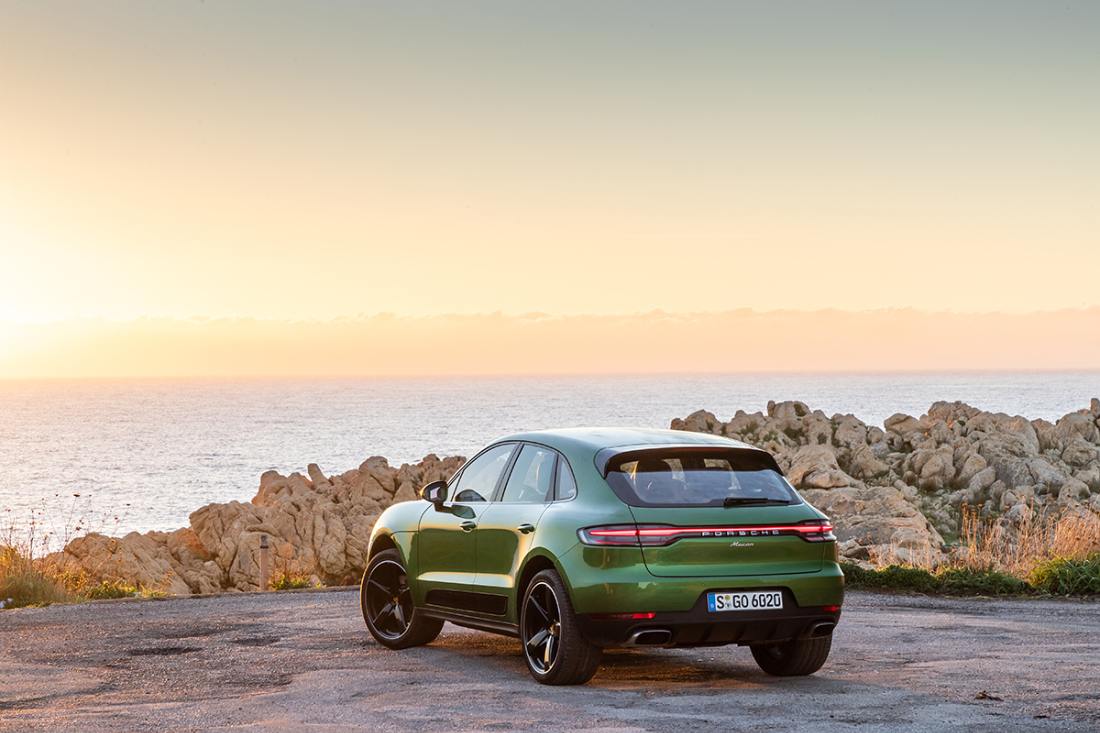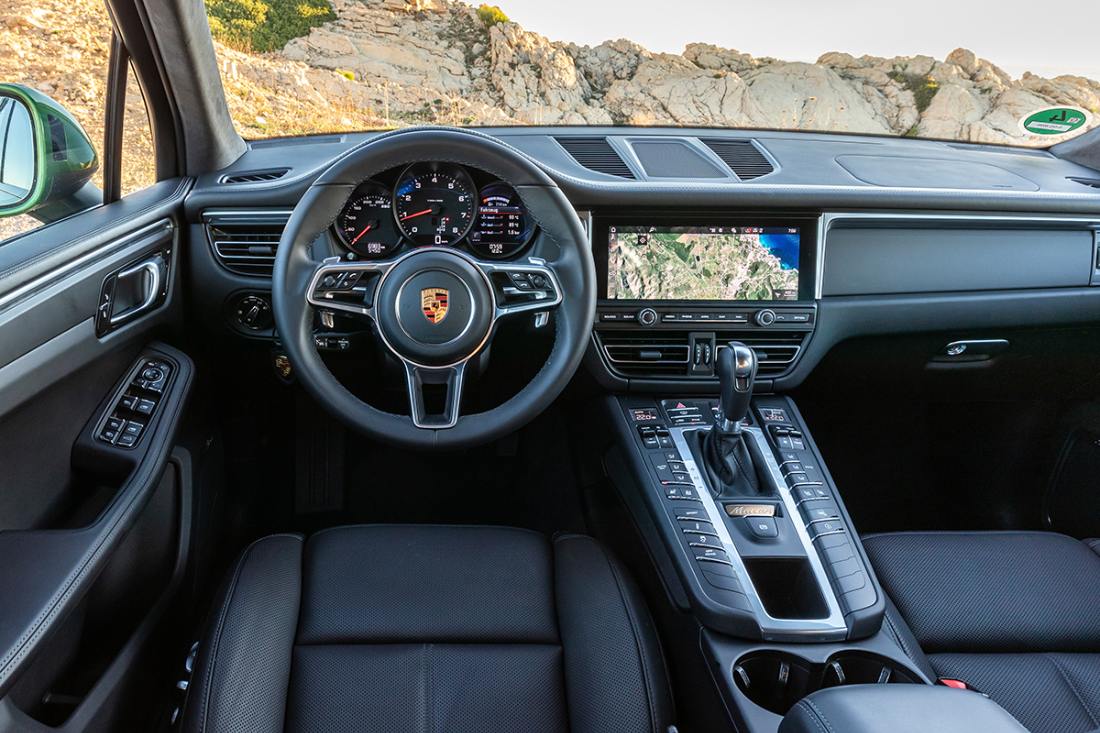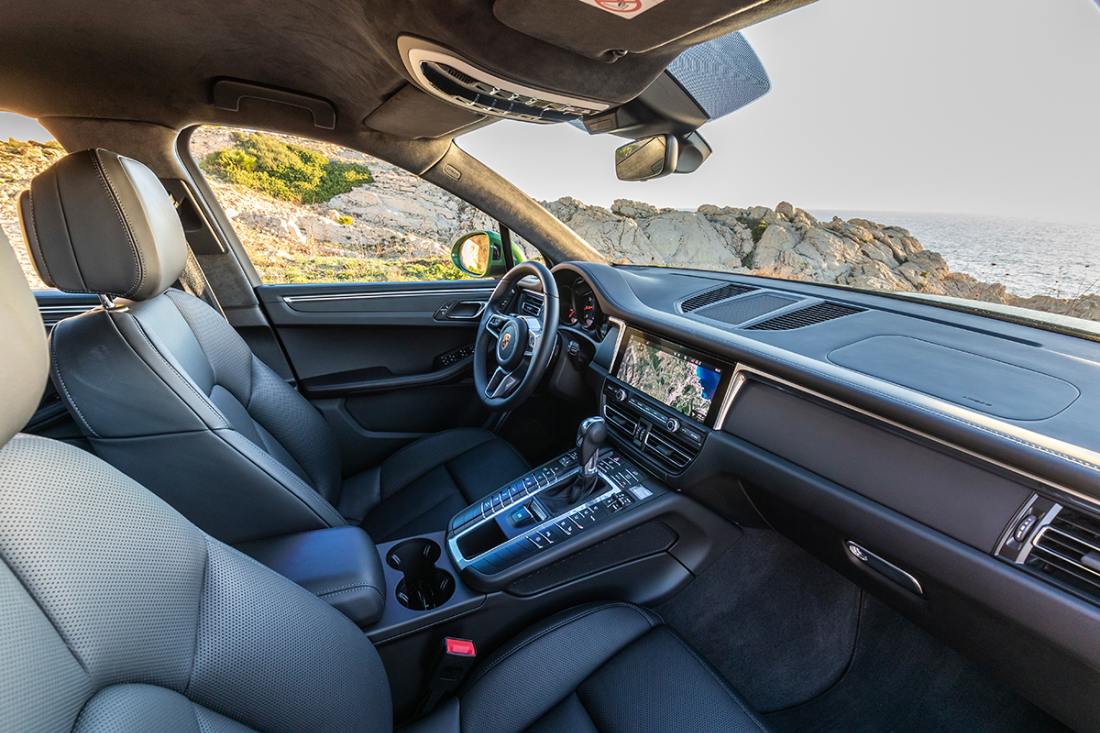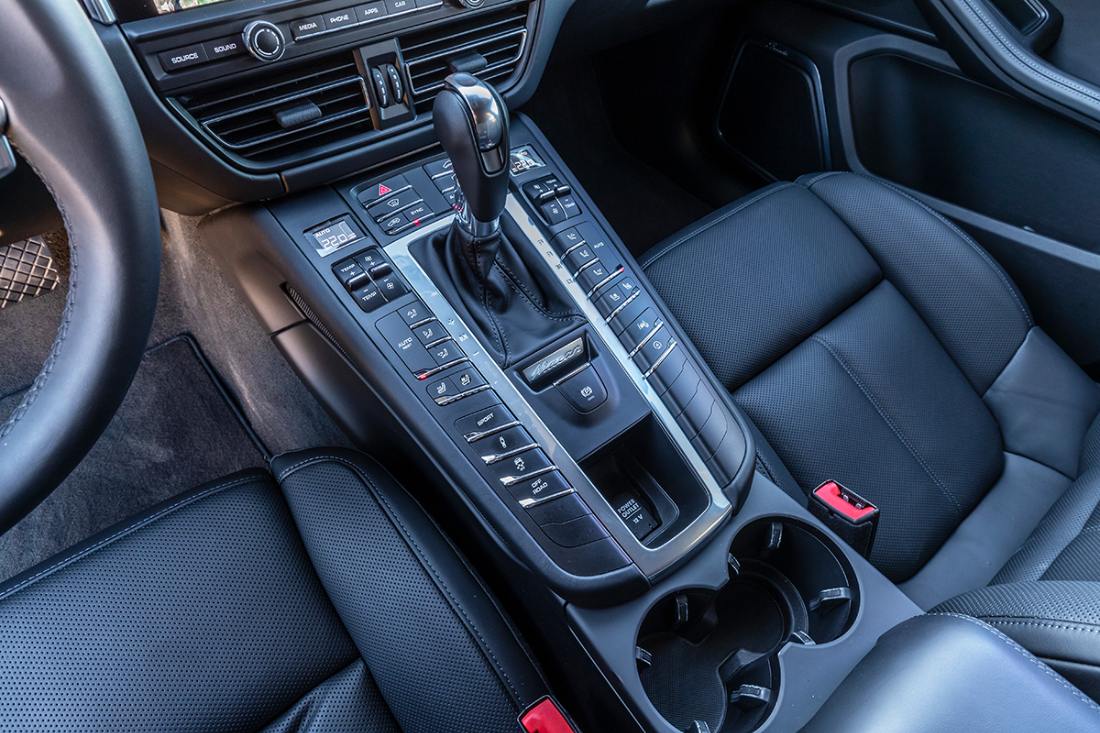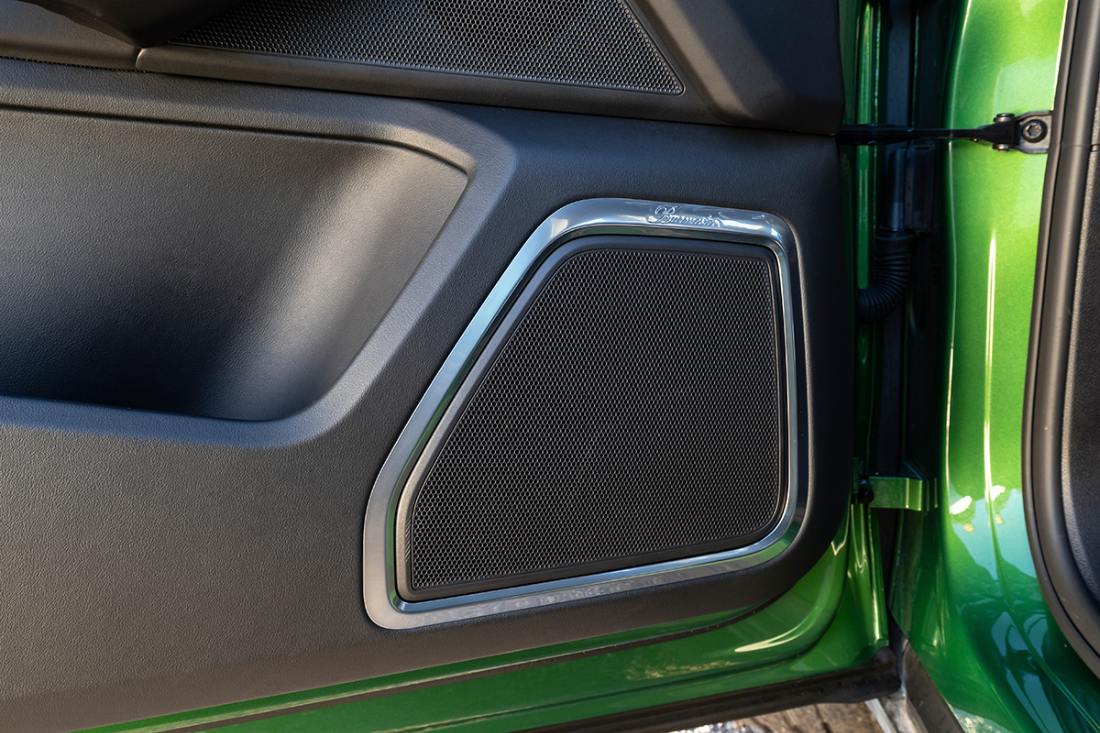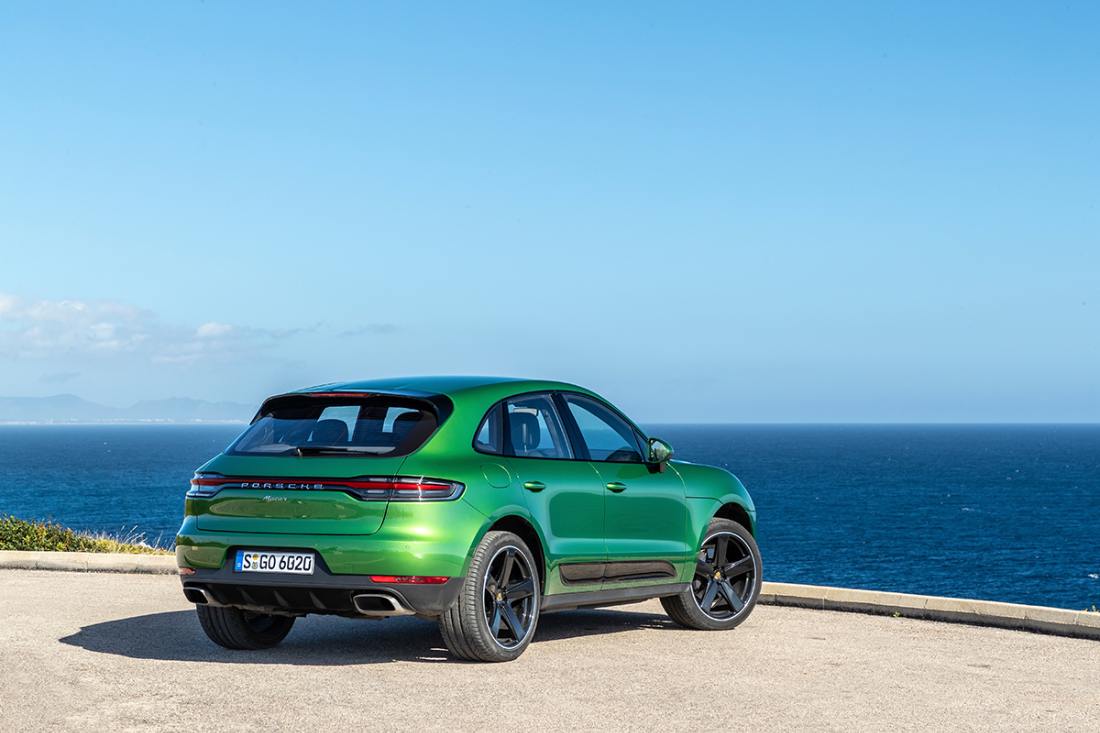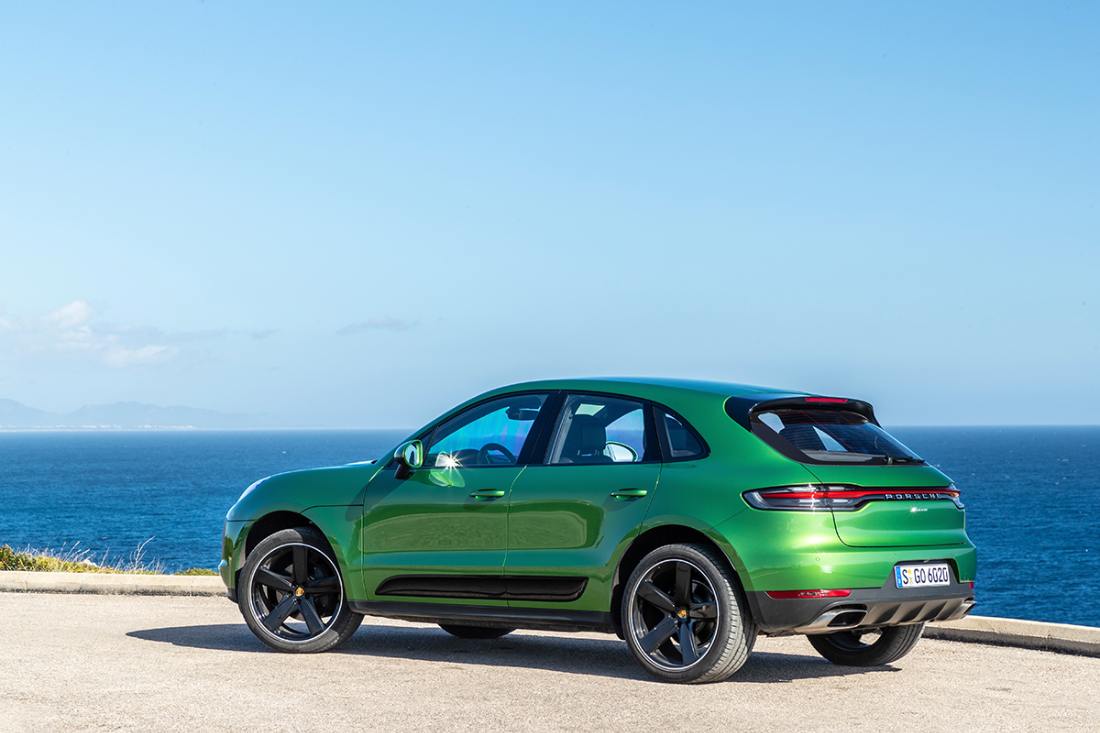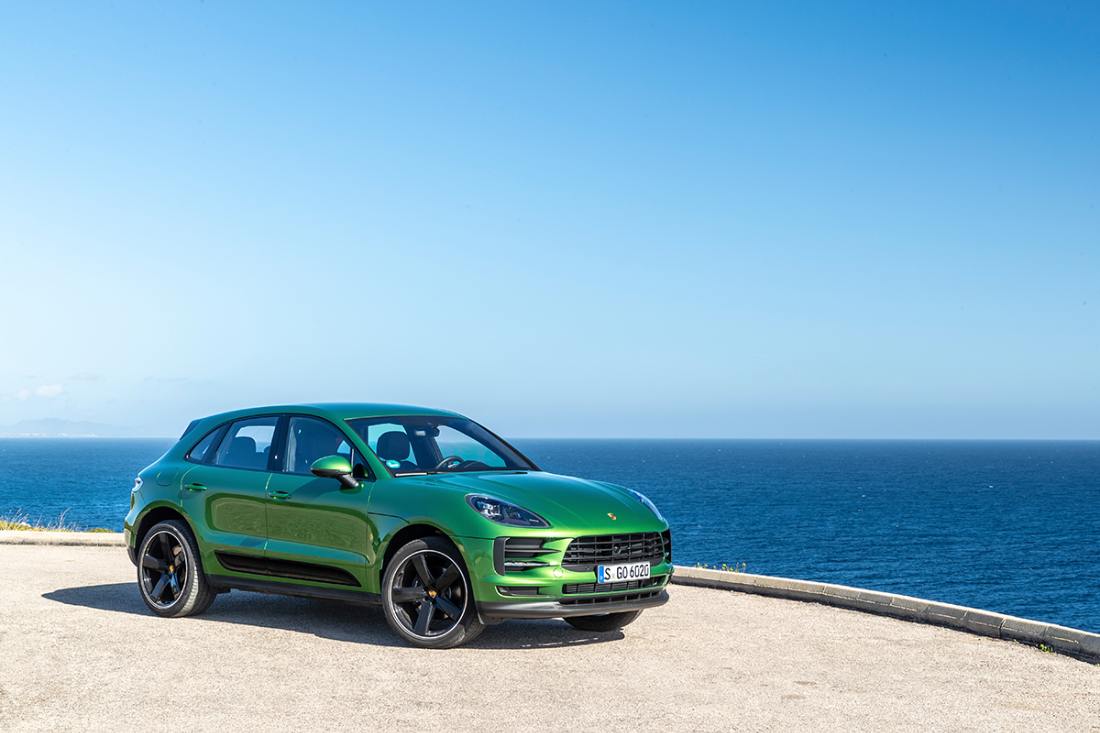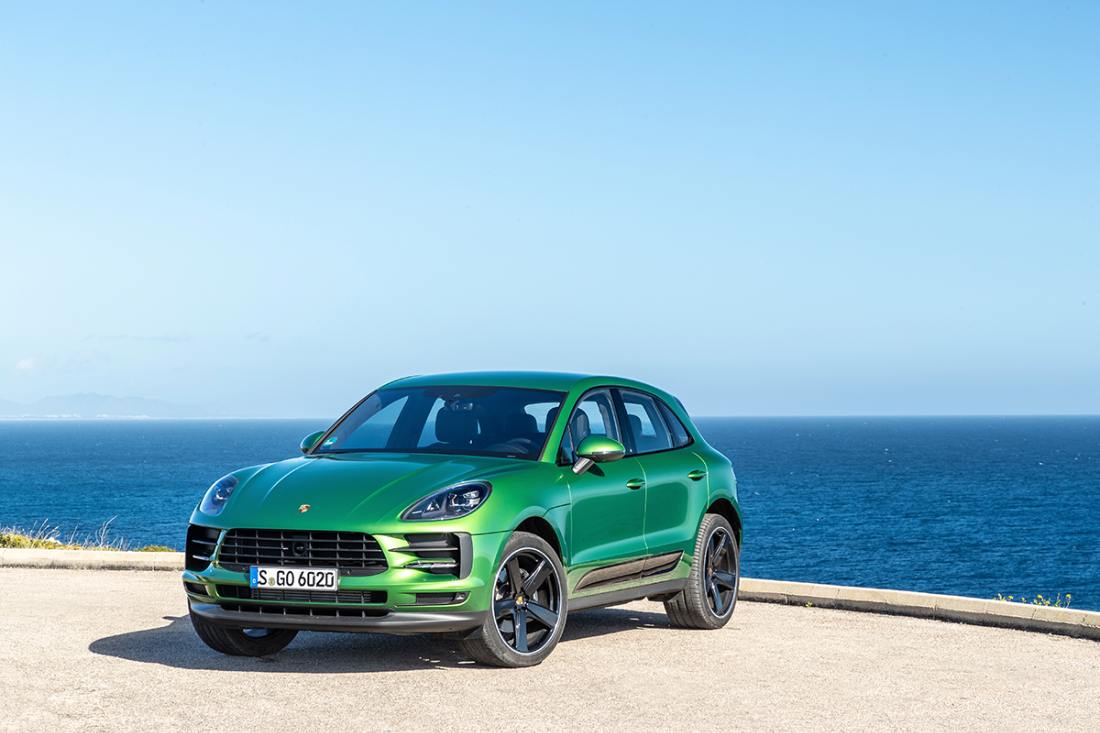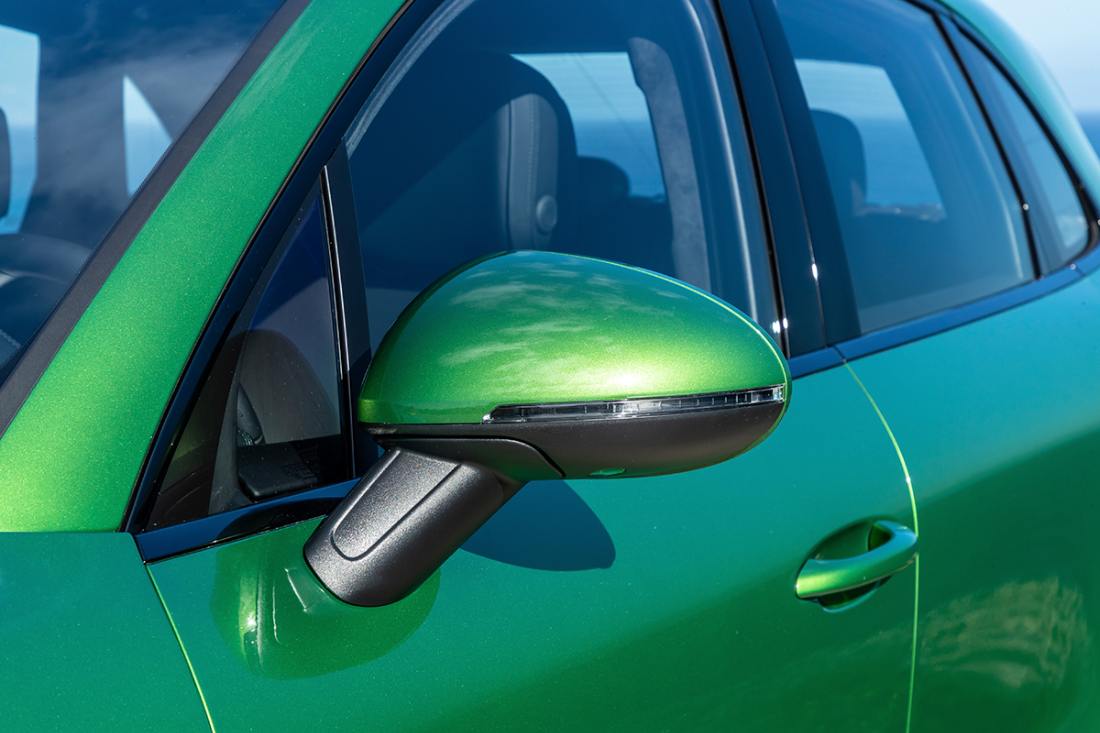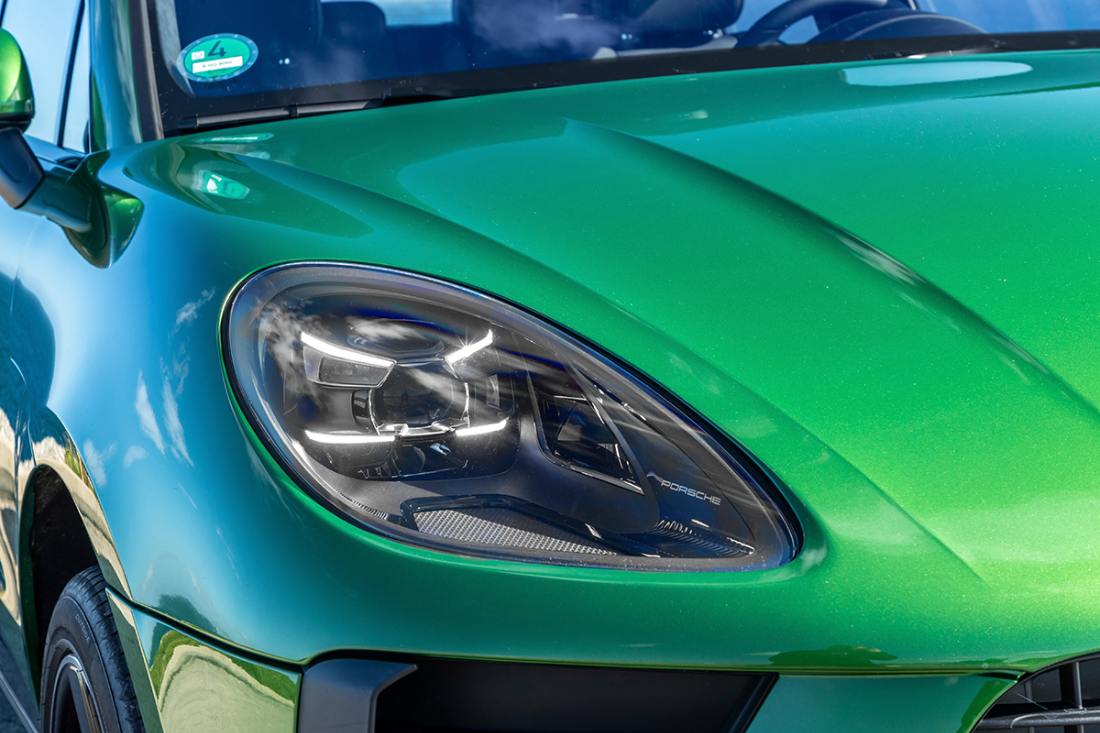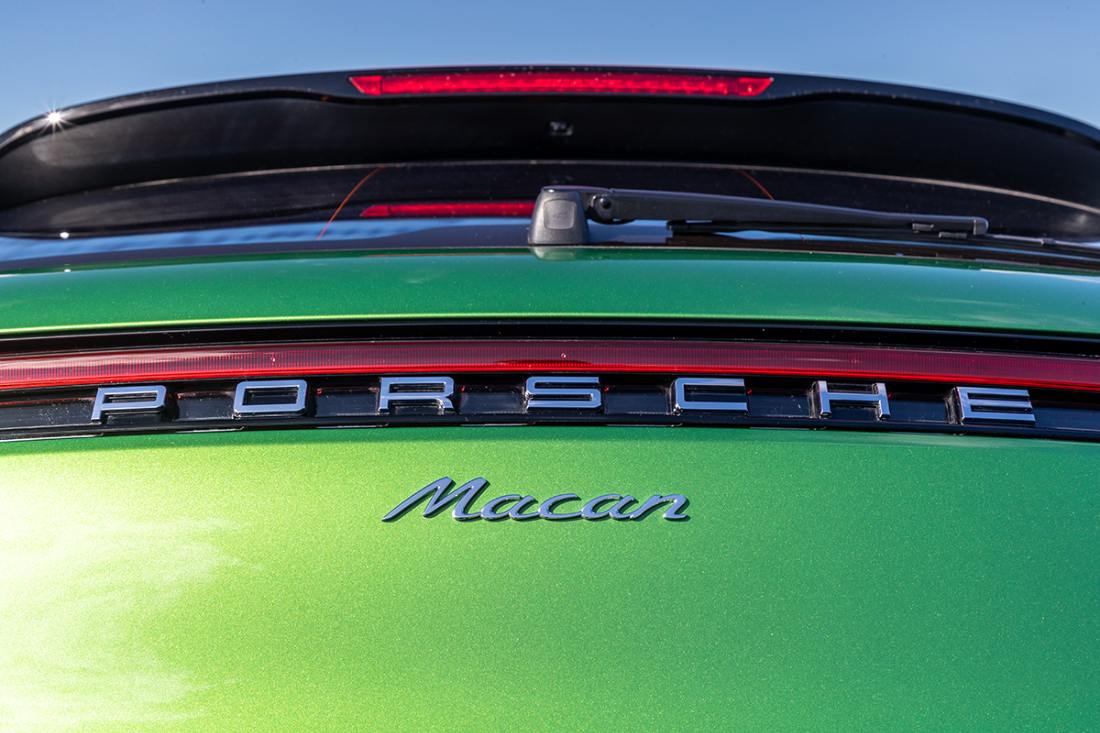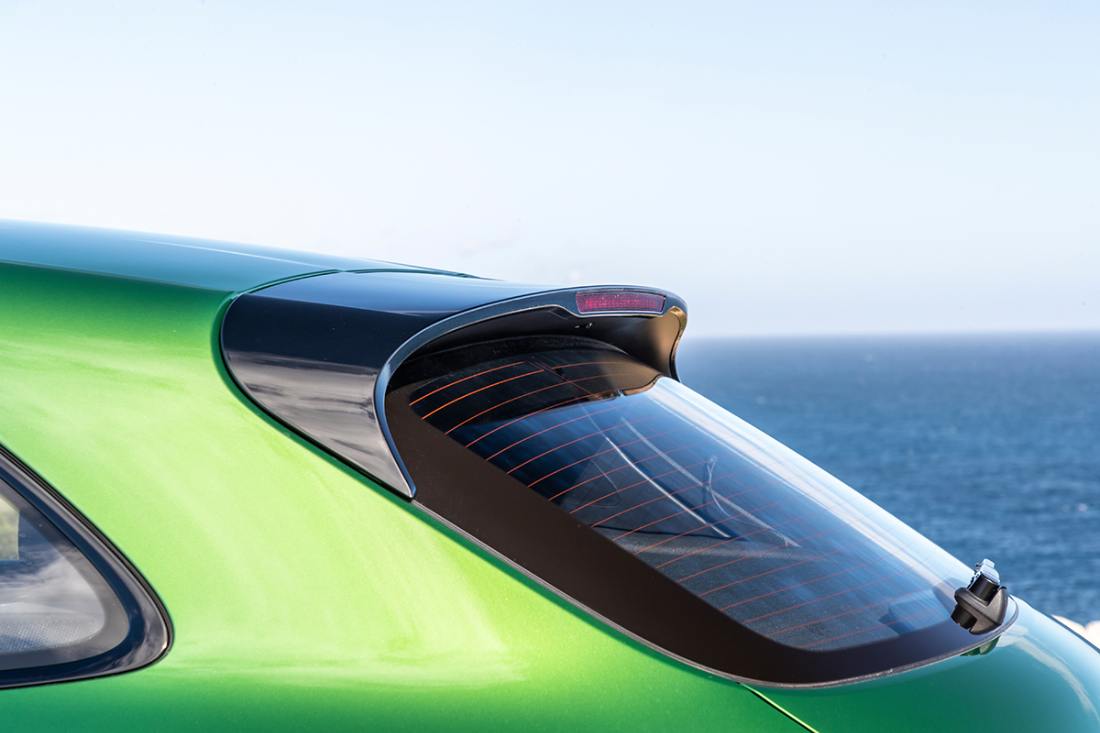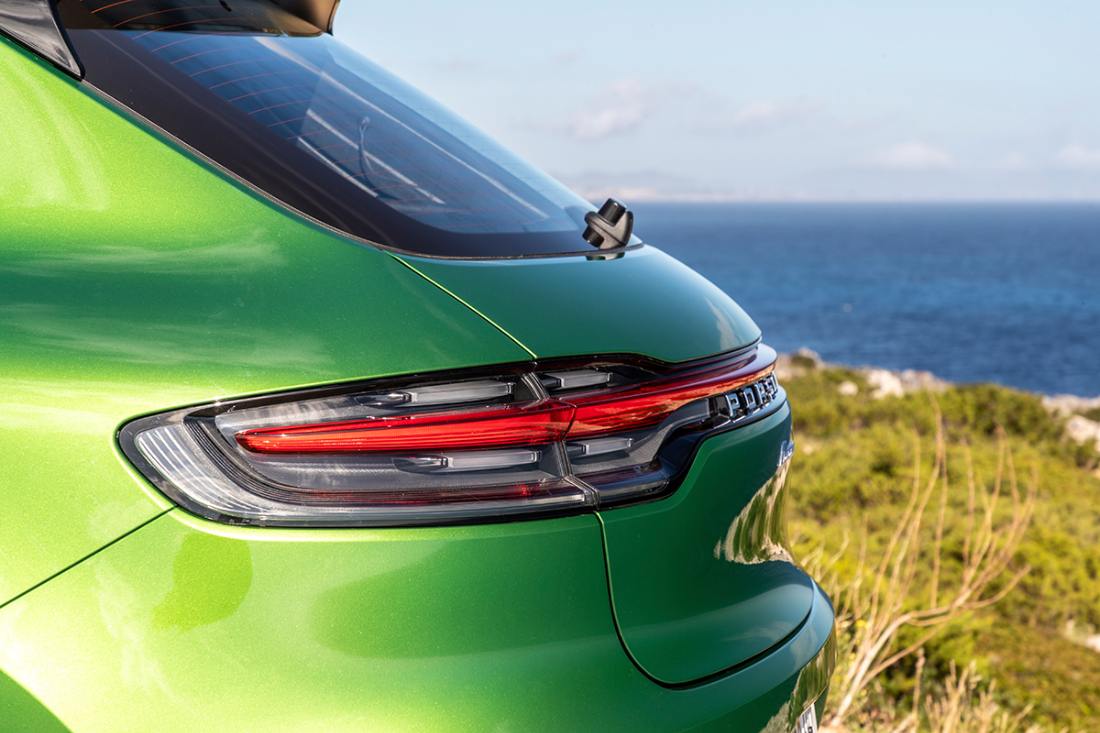Test drive: 2019 Porsche Macan
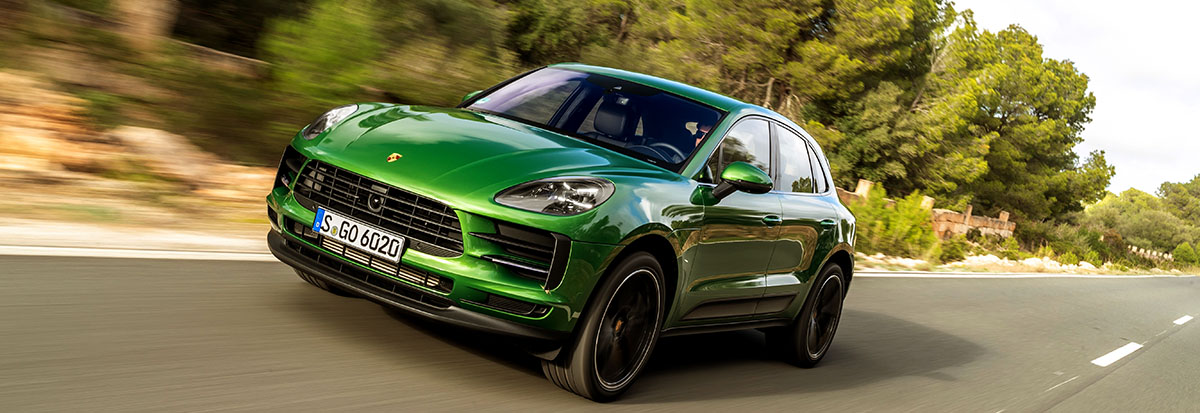
Overview
The Porsche Macan is the Cayenne’s little sister, and the most popular Porsche in the UK. It’s an SUV with a desirable badge, how could it not be a success? Thing is, the Macan has always overdelivered in just about every department. It’ll go further off-road than most owners will ever ask, it’ll hammer down a twisting road with more skill than most drivers would have the nerve to test, and it’ll seat five in front of a class-leadingly big boot. Porsche got the Macan right first time.
For 2019, it’s been subtly but usefully updated. On the outside there are new headlights peering through a reprofiled bonnet, tweaked door mirrors and some lairier paint hues. The only exterior change you’ll actually notice, however, is the full-width rear light bar, which apes the look of the new 911. (And Panamera. And Cayenne. And Taycan… yep, the Germans know a motoring fashion trend when they see one.)
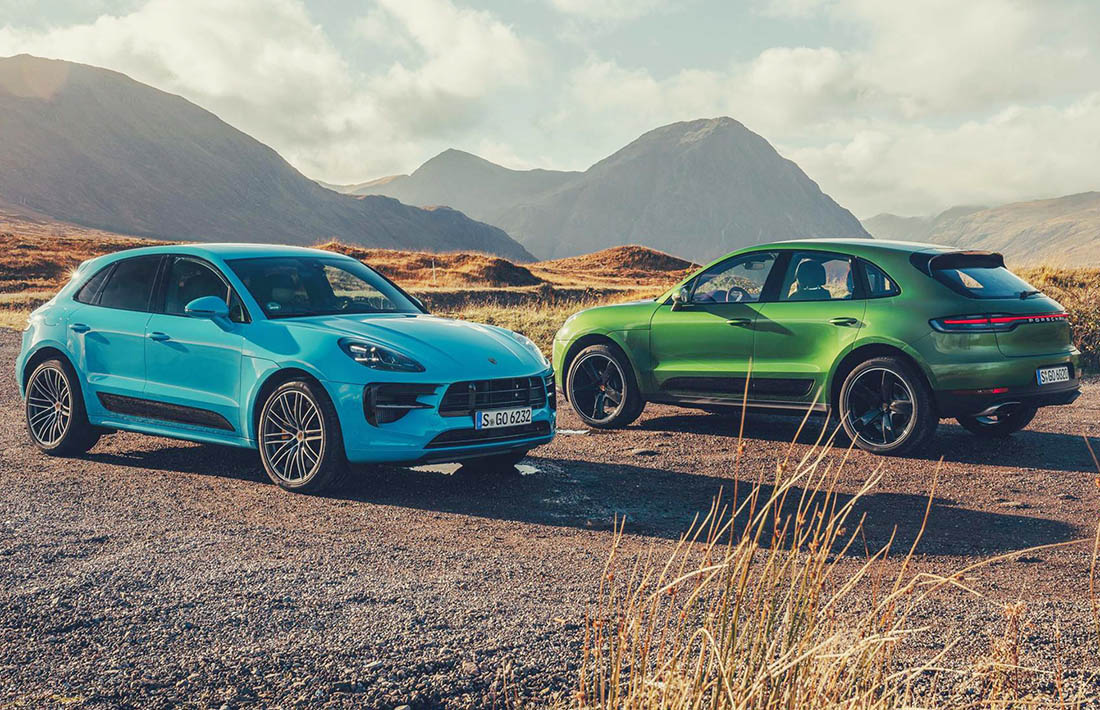
Inside, there’s a much more significant makeover. The air vents have been relegated lower down the order, to make way for a 10-inch touchscreen featuring a much more feature-packed interface inherited from pricier Porsches. However, Porsche’s pulled up short of pinching the entire Cayenne’s interior, so banks of physical buttons remain instead of touch-sensitive glass panes. As we’ll explore later, that might not be the downgrade in reality it could appear on paper…
Engines have also been thoroughly overhauled for the new Macan. First off, there’s no longer a Macan Diesel. Porsche has distanced itself sufficiently from diesel that there’s no longer any oil-burners across its range, which is bad news for the top-selling Macan, because the Audi-shared V6 derv was the most popular version in the UK. Assuming its position as the entry-level Macan is a new 2.0-litre turbocharged four-cylinder petrol version, badged simply ‘Macan’ and running a Porsche-honed version of the Golf GTI’s motor. All Macans arrive fitted to a seven-speed dual-clutch gearbox as standard (badged by Porsche as PDK), though note this isn’t as modern as the eight-speed PDK used in Porsche’s bigger four-doors.
Right now the other Macan available is the Macan S, which uses a 3.0-litre Audi V6, though finalised performance and emissions data isn’t ready yet. In the fullness of time there’ll be a flagship Macan Turbo aiming to dethrone the Alfa Romeo Stelvio Quadrifoglio and Mercedes-AMG GLC63 in the small super-SUV stakes. We’d also expect to see a middling Macan GTS with some choice racetrack-inspired options.
Porsche hasn’t yet ruled out the possibility of offering a hybrid at some stage either. It seems unlikely, as the Macan is loosely based on the last-gen Audi Q5 so packaging a meaningfully useful battery would be tough without eating into the (very generous) boot space, but Porsche may have its arm twisted by ever more stringent emissions tests. Even the 911 is apparently going hybrid, after all…
Prices start at under £47,000. For that, a 2.0-litre petrol engine and the big touchscreen comes as standard. As usual for a Porsche, watch out for the options list. Heated seats are one of several mean omissions from the standard kit list, and you can also spend plenty of chassis tech upgrades to tweak the handling. You certainly don’t need to, we’d argue…
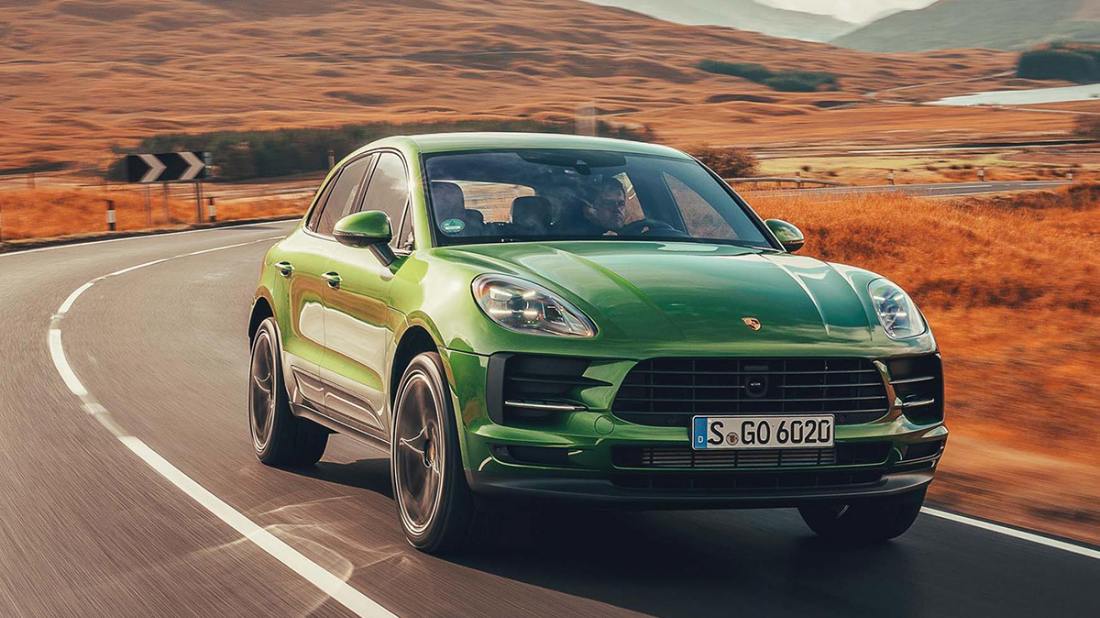
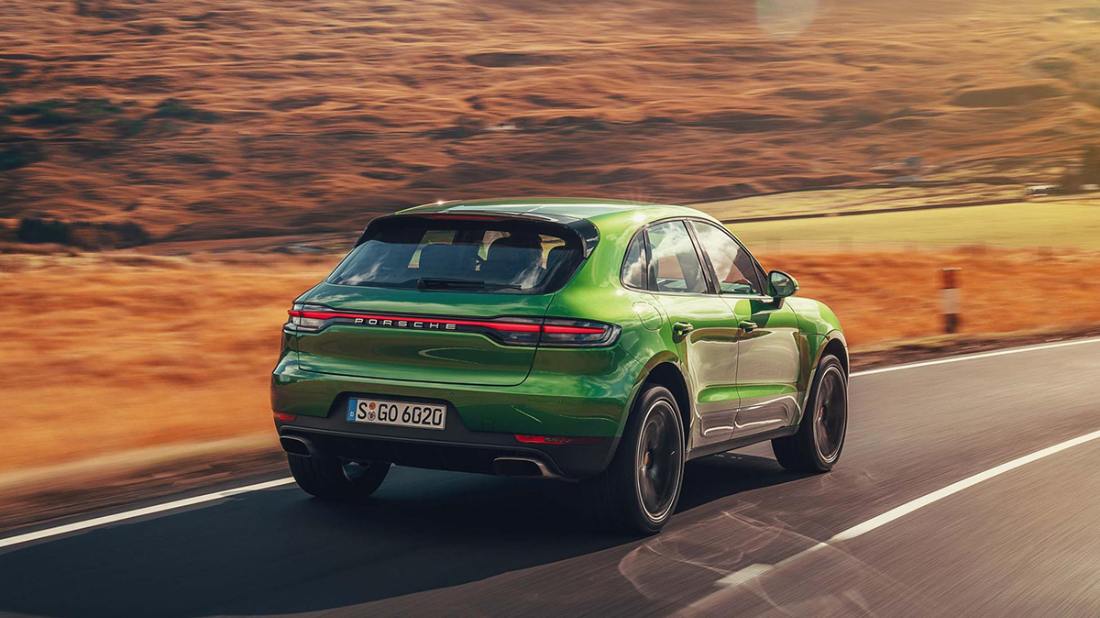
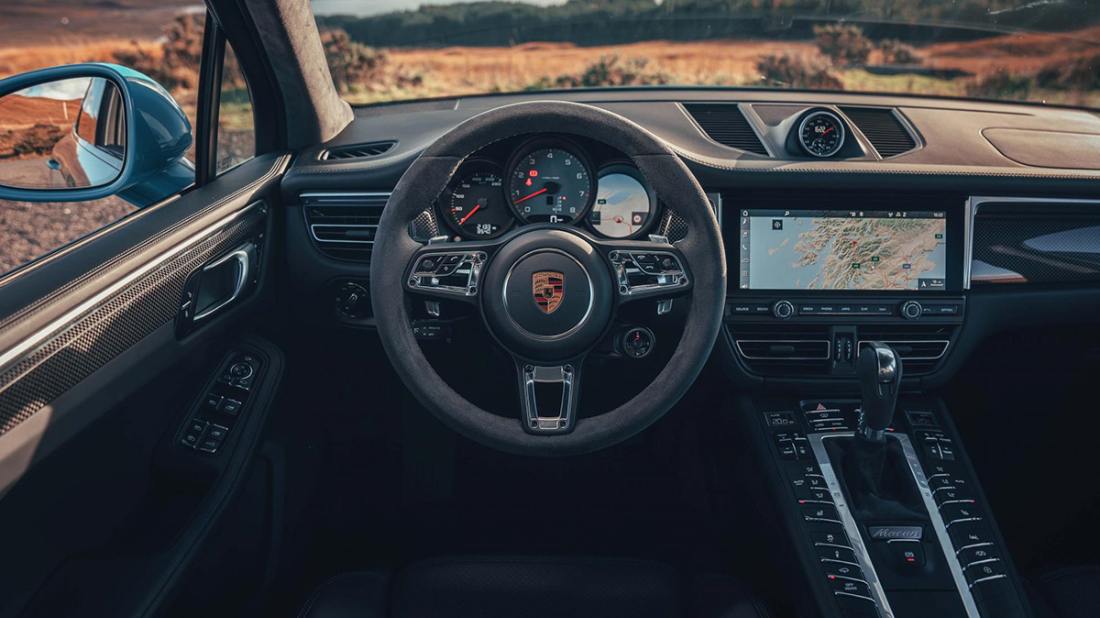
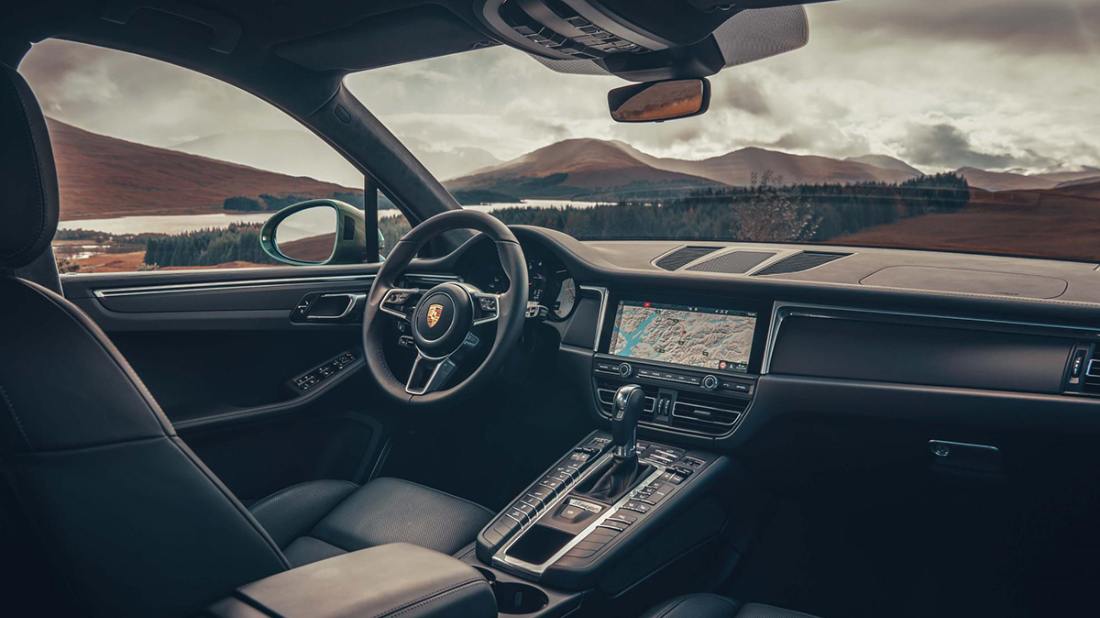
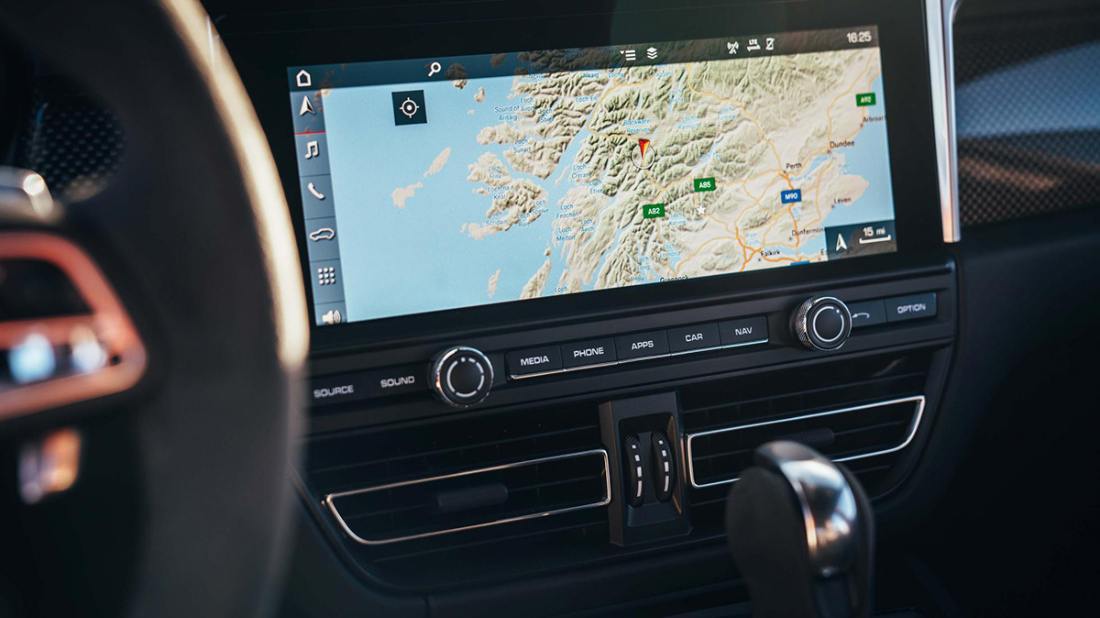
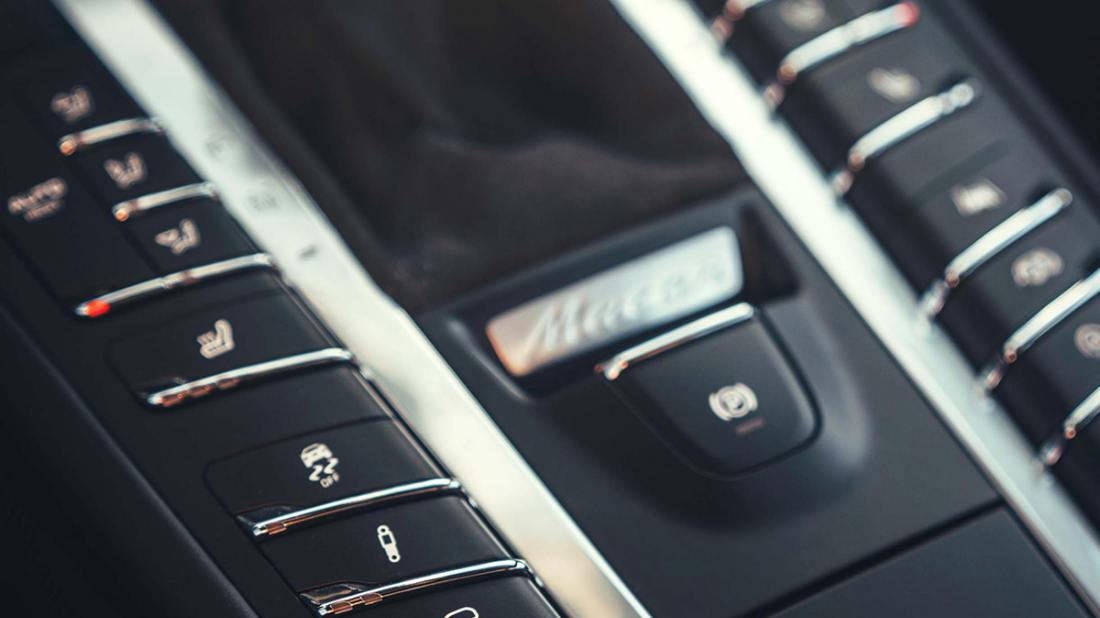
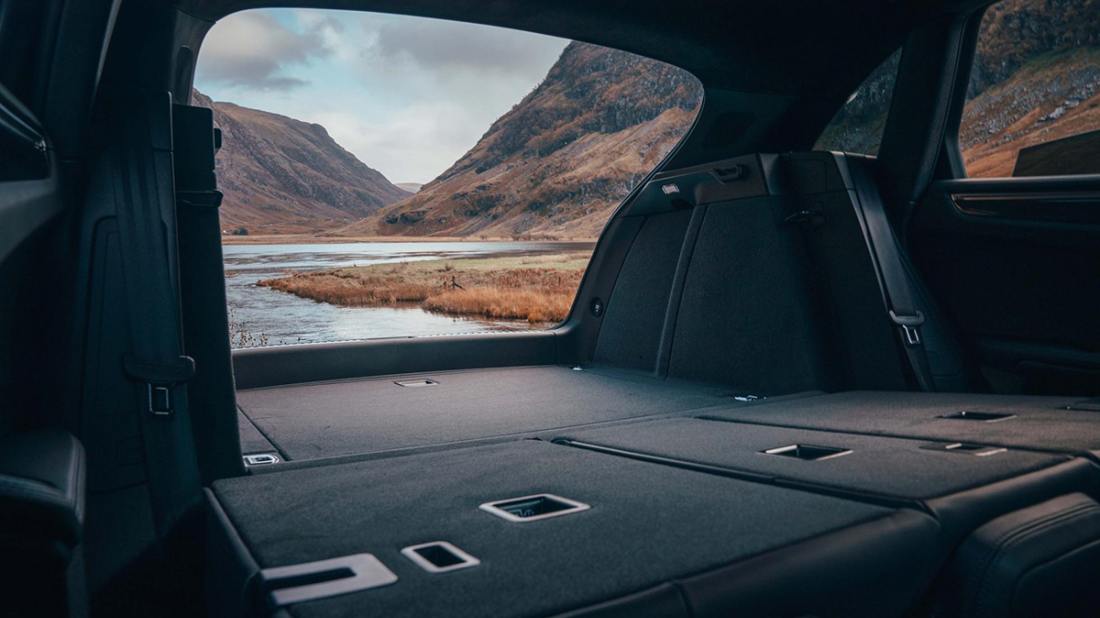
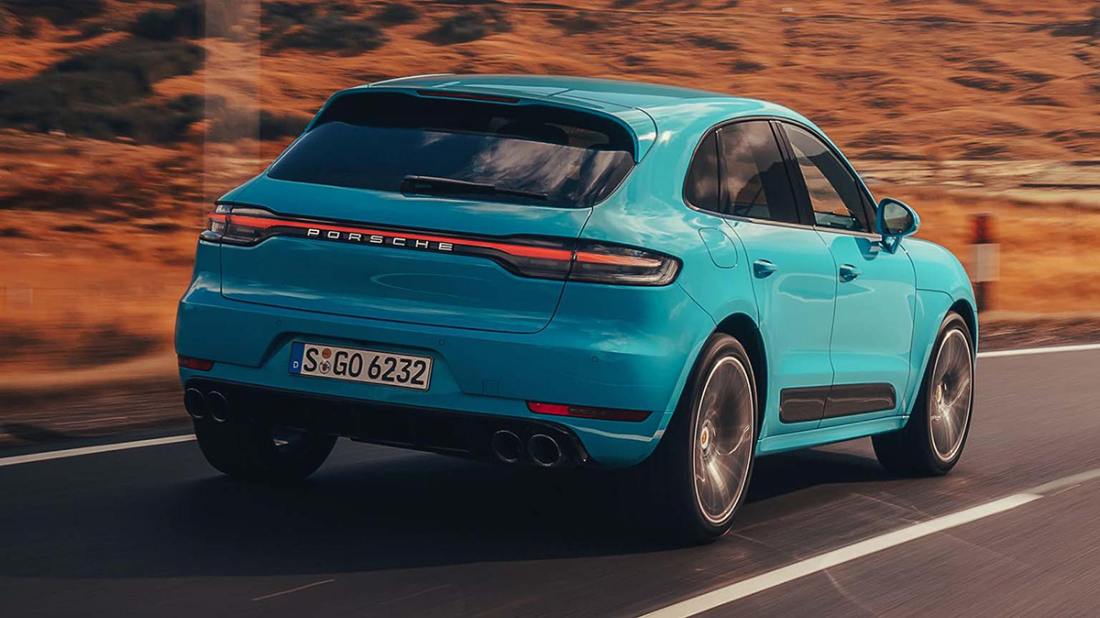
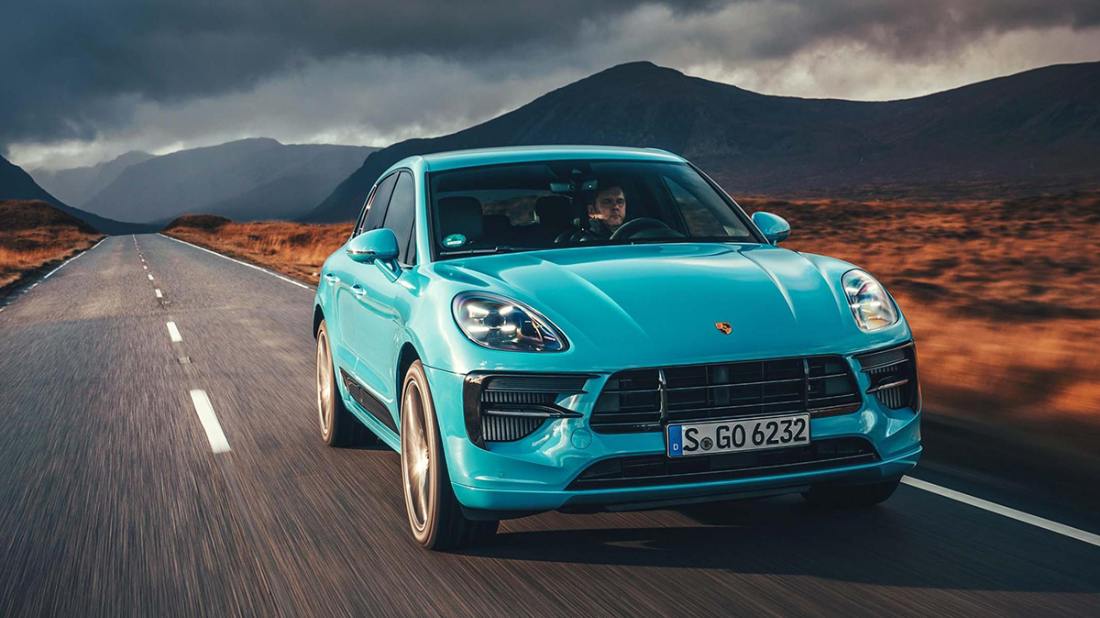
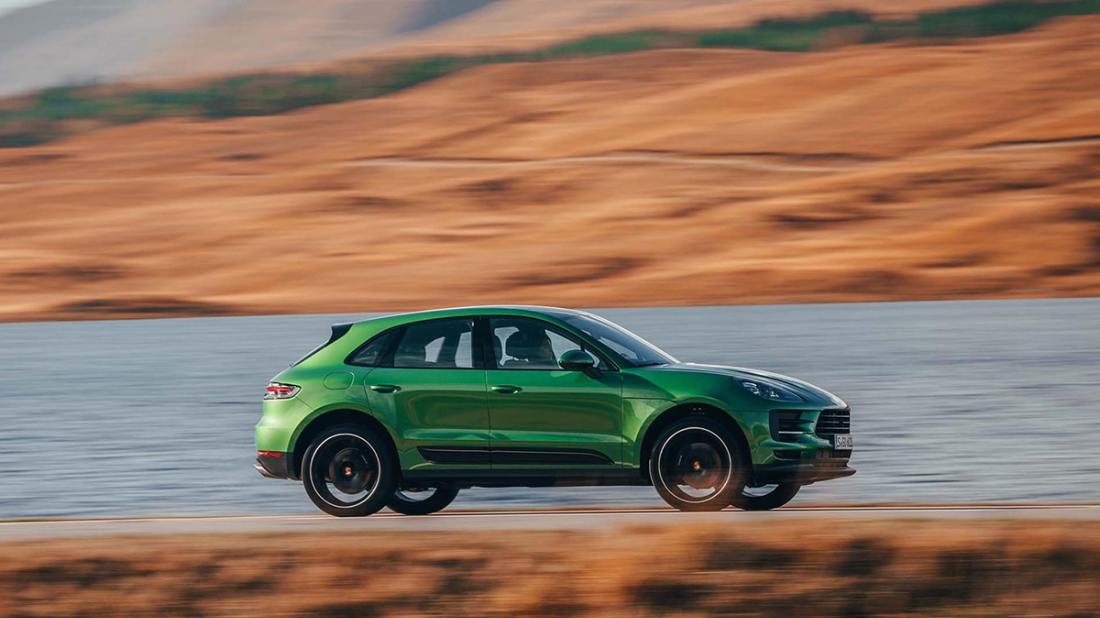
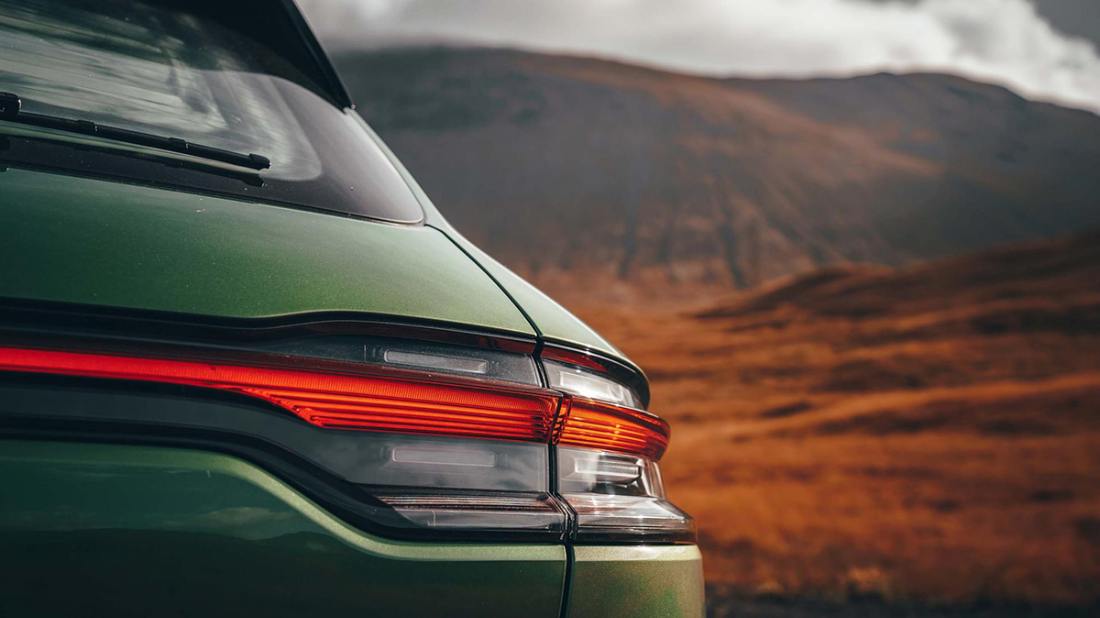
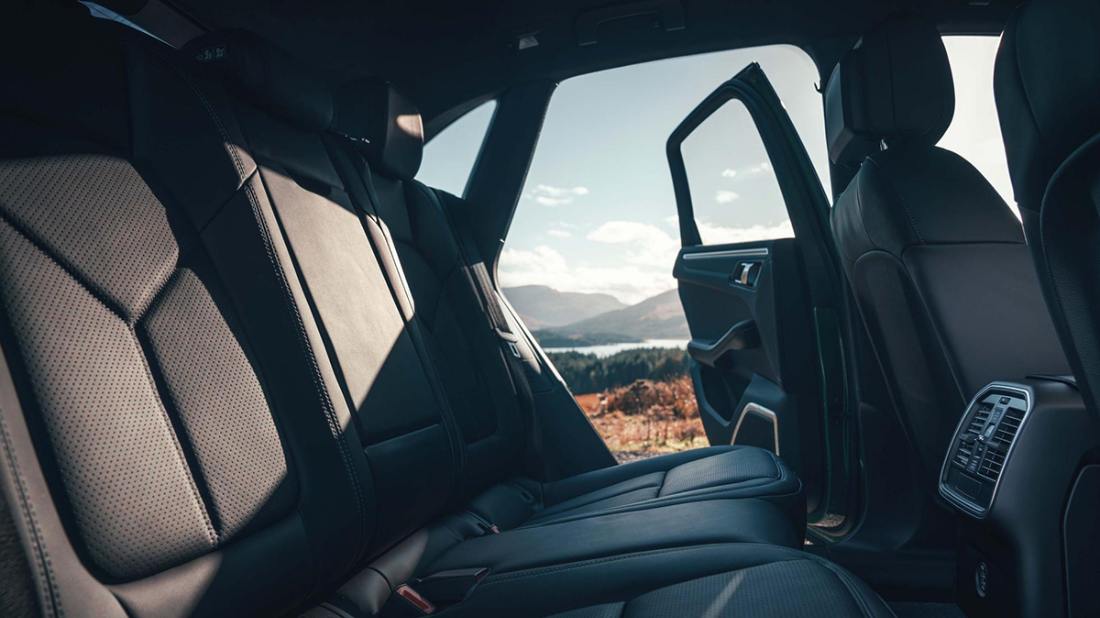
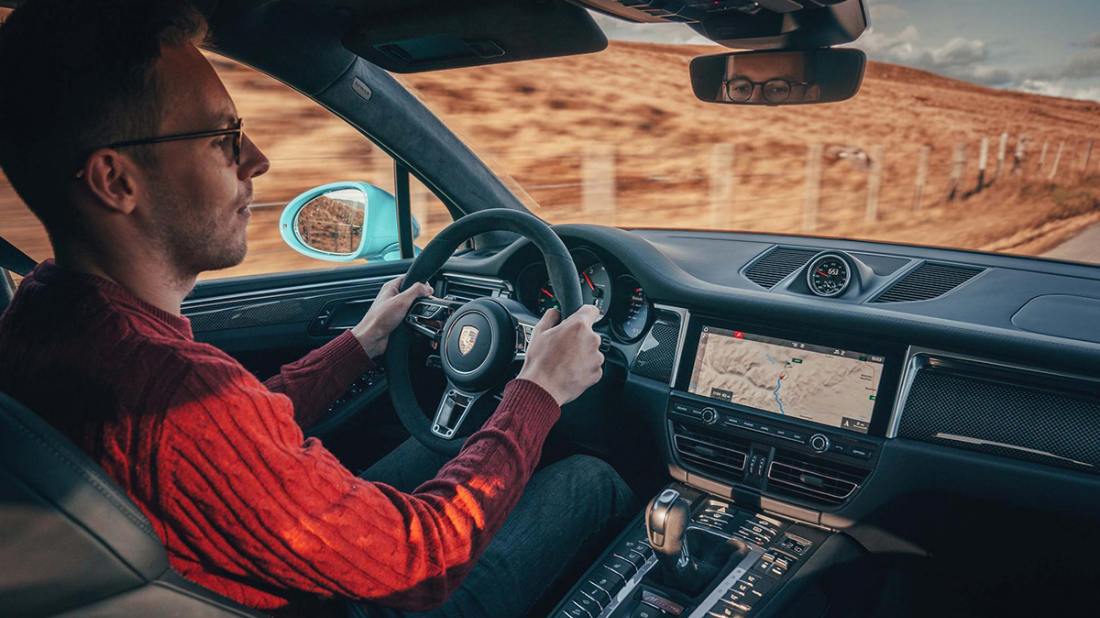
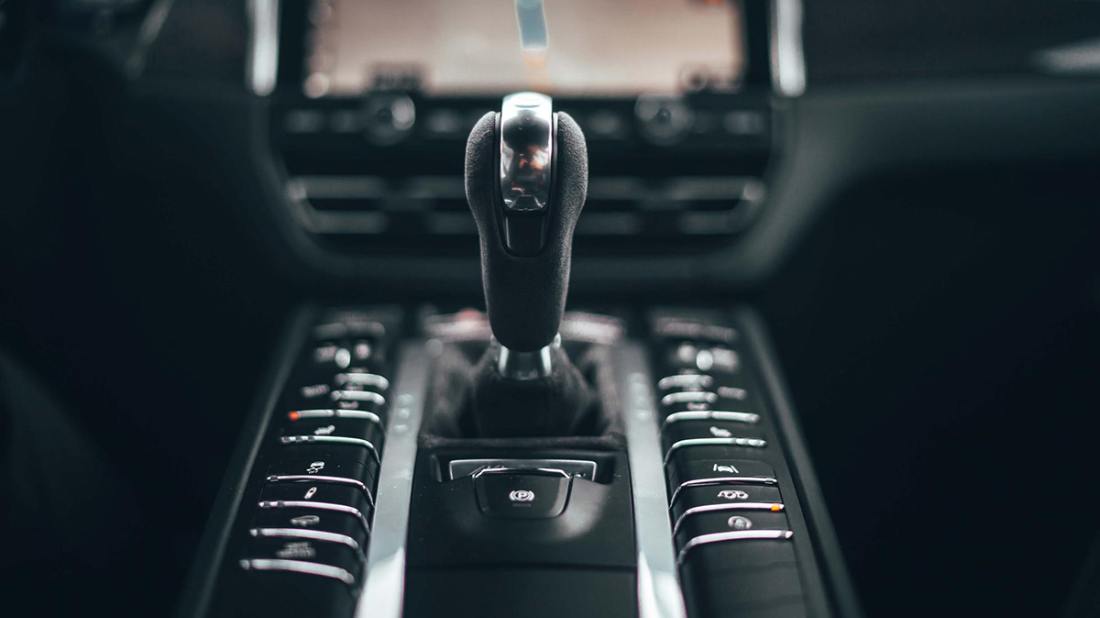
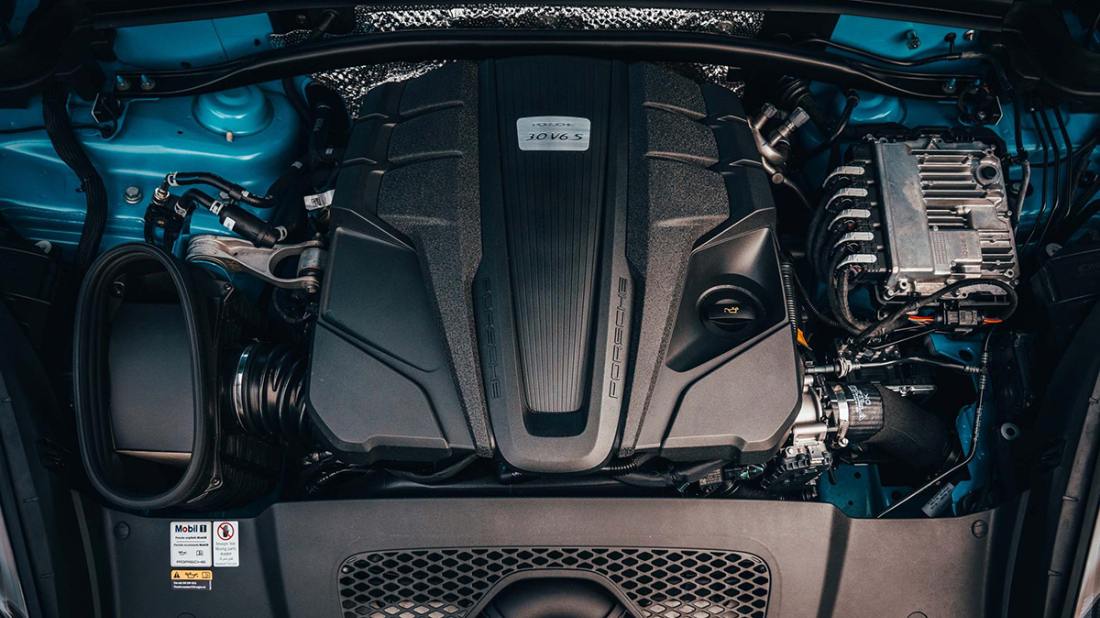
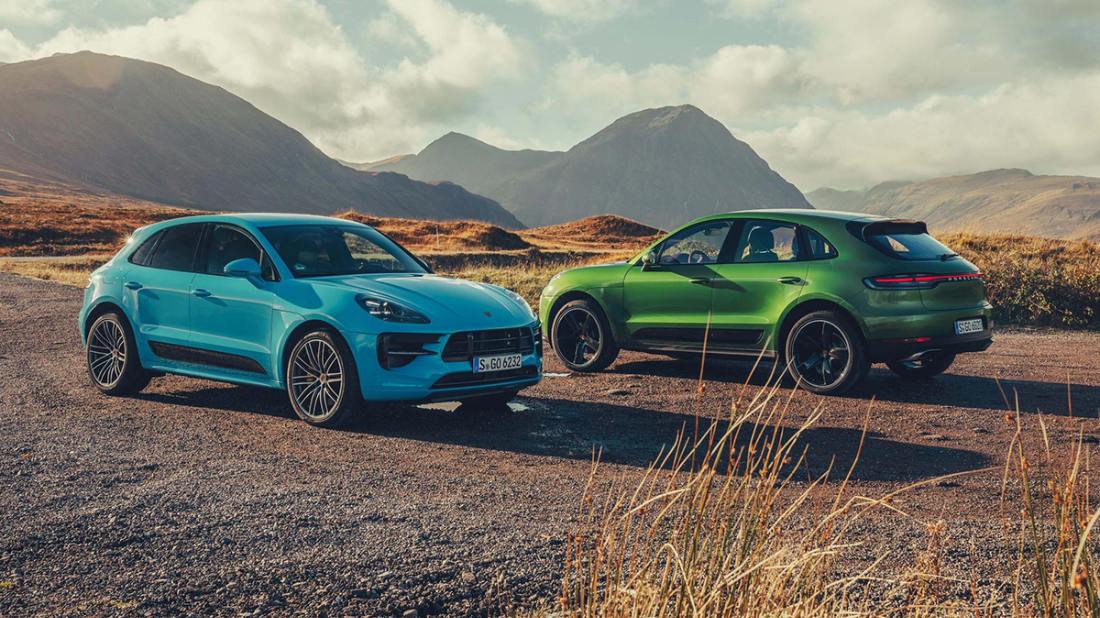
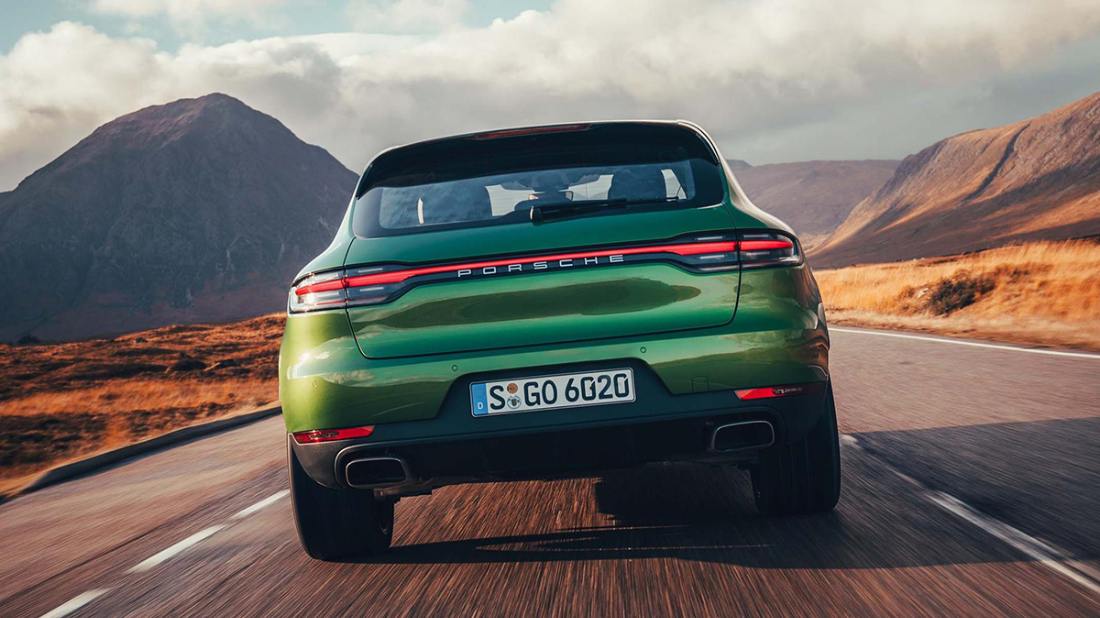
Driving
Very much the Macan’s comfort zone, this. Porsche’s been a dab hand at making SUVs handle improbably well since the original Cayenne arrived in 2003, and the refreshed Macan is no different. But you probably guessed as much, given the new Macan’s really not changed a great deal under the skin. Porsche is coy about what’s been tweaked this time around, saying it’s mainly suspension calibration and new tyre designs, which hints that Porsche thinks the same as we do – there wasn’t much wrong with how the Macan went down the road.
The body control is the standout aspect. The Macan does without the 48-volt anti-roll active suspension tech of younger SUVs, but the way it sustains momentum, avoids lean and controls its wheels over road imperfections is still spectacular. It crucifies a Jaguar F-Pace on the roads the Jag was supposedly developed on. There’s agility, a definite sense of rear-biased four-wheel drive balancing the car mid-corner, and the same sense of road-crushing comfort you find in a bigger Land Rover or Range Rover.
The only SUV that’s wrested the Macan’s throne as king of the handlers has been the Alfa Romeo Stelvio, which is even defter, and feels lighter on its feet. For a squirt down a B-road, it’s TG’s favourite, but as we’ll see, the Macan topples it as a much more rounded, complete product.
Oh, we’d have also liked a dollop less weight in the Macan’s steering, which falls into the ‘hefty is sporty’ trap even when you’re trying to parallel park. It’s been solved in the base model – courtesy of a lighter engine.
See, Porsche is no longer a diesel car manufacturer. And while purists will rejoice and call for a ticker-tape parade, the accountants will be quaking. Porsche is chiefly an SUV maker, and in Europe, it leant heavily on diesel powered cars. The old Macan S Diesel was quite simply the most popular Porsche in Britain. Now, it’s gone, thanks to the market downturn and political incompetence. And in its place, we find a Golf GTI engine in the baby Macan.
Porsche, of course, doesn’t think of it as such. It says that although the 2.0-litre four-cyl petrol is related to the ‘EA888’ VW engine in myriad hot Golfs, the Audi TT and so on, it says the Porsche version has its own turbo, its own software, and Porsche’s standard-fit PDK twin-clutch gearbox makes a difference too. So there. It develops 242bhp and 370Nm, which gets the Macan from 0-100kph in 6.3sec, or 6.1sec with the Sport Chrono pack selected. That’s exactly as quick as the old V6 diesel went. It doesn’t feel as effortless of course, because you’ve got more revs on board, but the gearbox is a very obedient companion and it just requires a change to your driving style to not get caught in a torque hole. Just don’t expect the same easy thirty-something to the gallon economy your diesel gave you.
There’ll be faster variants down the line, but at the time of writing we’ve only had a chance to sample the Macan S. It uses an Audi-shared 3.0-litre V6 turbo unit, good for 349bhp, up 14bhp from the old Macan S. Official 0-100kph is 5.1sec, but this is Porsche-official, so in actual fact this is a sub-five seconds car, on a good day. Porsche is often a little pessimistic with the data it quotes.
Sports-exhaust equipped, it sounds pleasingly raspy – more so than the Audi S4 with the same engine, in fact. Response from the turbos is ace too – really crisp for a heavy car with a not particularly racey engine. It’s only the S, after all. It’s quick enough you’d question the need for the ‘proper’ Macan Turbo, and its only about 2-3mpg less efficient than the 2.0-litre petrol in mixed, everyday driving.
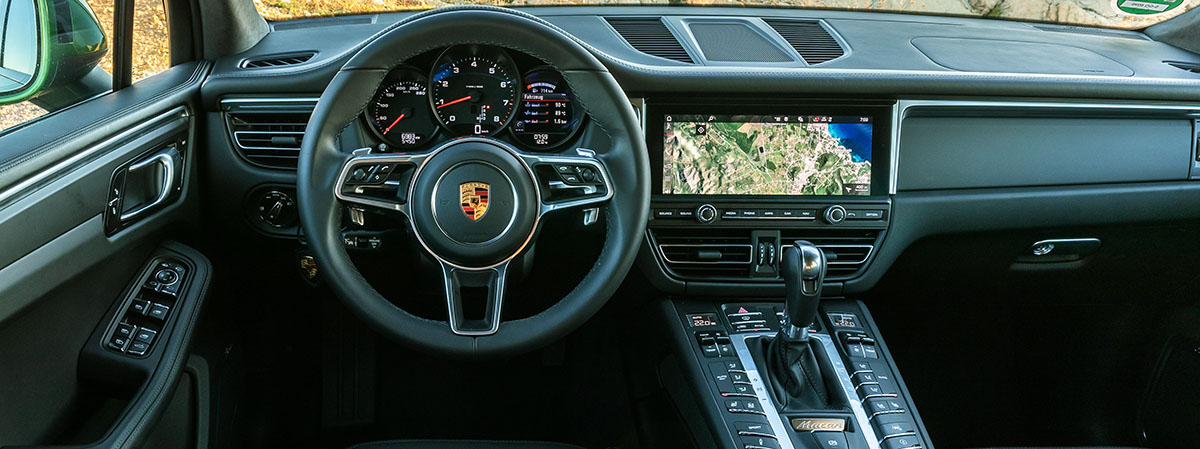
On the inside
Here’s where the Macan extends its lead over newcomers like the Alfa Romeo Stelvio and Jaguar F-Pace. Its cabin is almost embarrassingly more expensive. Materials are exemplary, with far fewer varied finishes than you’d find in a BMW X3. It’s more solidly put together than a Mercedes GLC too. Very few Macan buyers will push the limits of its uncanny handling, but plenty will be swayed by the designer label ambience of this cabin. And the basics, like a decent glovebox, hidden stowage cubbies and comfortable, supportive seats are all catered for.
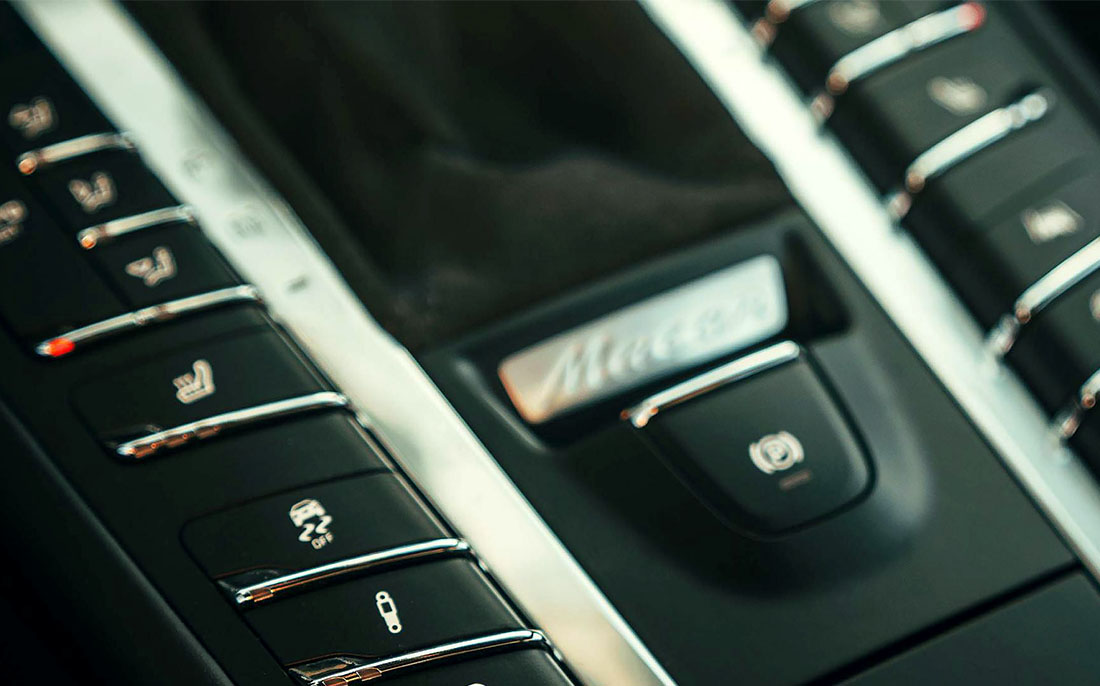
Up front, you’ve now got a much bigger, crisper touchscreen to use. At 12.3 inches across, it’s a big one – standard equipment, too – and its slightly fiddly interface is inherited from the bigger Cayenne and Panamera models.
What isn’t is the continued use of physical buttons on the centre tunnel. Yes, it looks fussy, but within a quarter of an hour you’ve noted how logically the clusters of climate control, seat comfort and handling/powertrain controls are positioned, and how they’re easier to operate than a touchscreen while you’re bucketing along a road. Less tricky than the touchscreen consoles of the Cayenne and Panamera, at any rate. It’s like sitting inside a premium laptop. Great screen at front, tactile keys underneath. It works well. Enjoy it while it lasts.
Rear space is adult-friendly. Despite the Macan’s clever styling that hides its bulk and slightly dipping roofline, it’s plenty roomy for a family, with a big boot out back too – 500 litres with all five seats up, and triple that in seats-down van mode. There is no seven-seat option, but no performance SUV tends to offer this option. That’d be one too many contradictions in one car.
Verdict
Yes, we’re sticking our neck out and saying it – the Porsche Macan is (still) the best SUV money can buy. Rivals have their own small victories: the Alfa Stelvio is more chuckable when you’re on your own, and the AMG GLC63 sounds cooler while being caned. But as an all-rounder, a car for all tasks and occasions, Porsche’s effort is unsurpassed.
We reckon the updated interior is the revised car’s biggest improvement – in fact it’s now the best cabin Porsche makes, because it eschews a fiddly touchscreen centre console. It’s a refined, comfortable capsule. Under the bonnet, the new 2.0-litre engine does the job better than expected, but it’ll be a shock to the system to the buyer who’s reaching to the limits of their finance to get into a Porsche. 25-28mpg day to day will sting, but that’s the price of being politically futureproof.
Thing is, just as the 911 is the sports car by which all others are judged, and the Cayenne has long been the yardstick for big SUV handling and luxury, the Macan does it again. Nothing for the money does quite so much quite so well. In a world where SUV demand often seems at odds with the compromised nature of the vehicle in question, this is the car that deserves world domination. Small wonder 350,000 have been sold since 2014.
